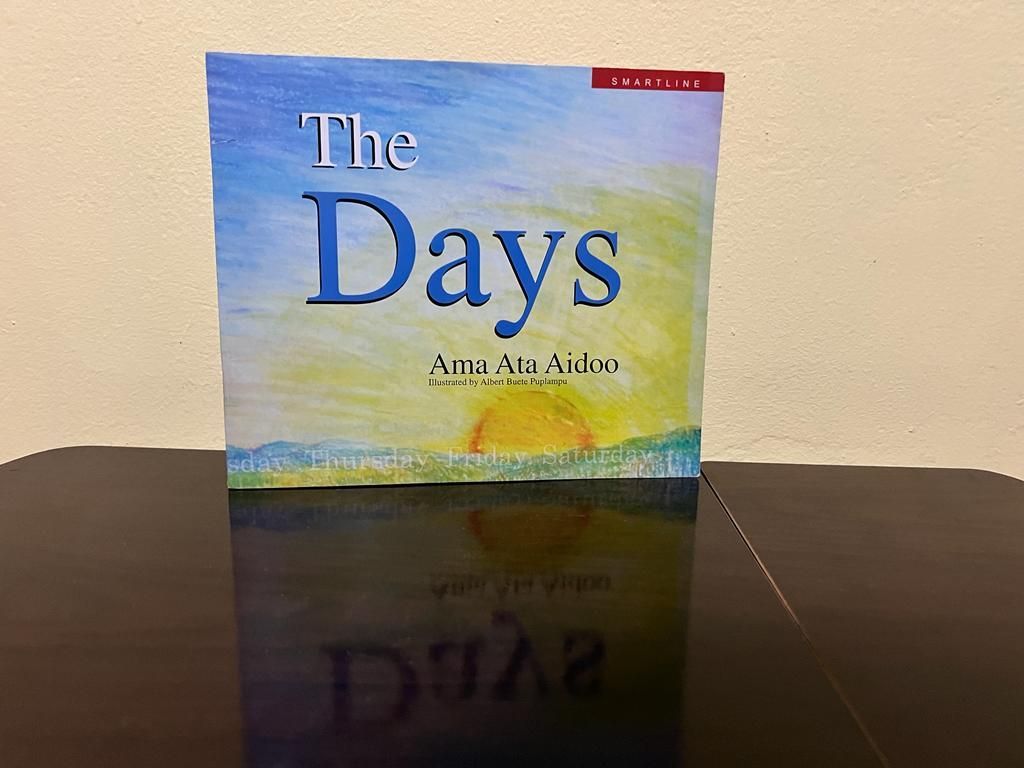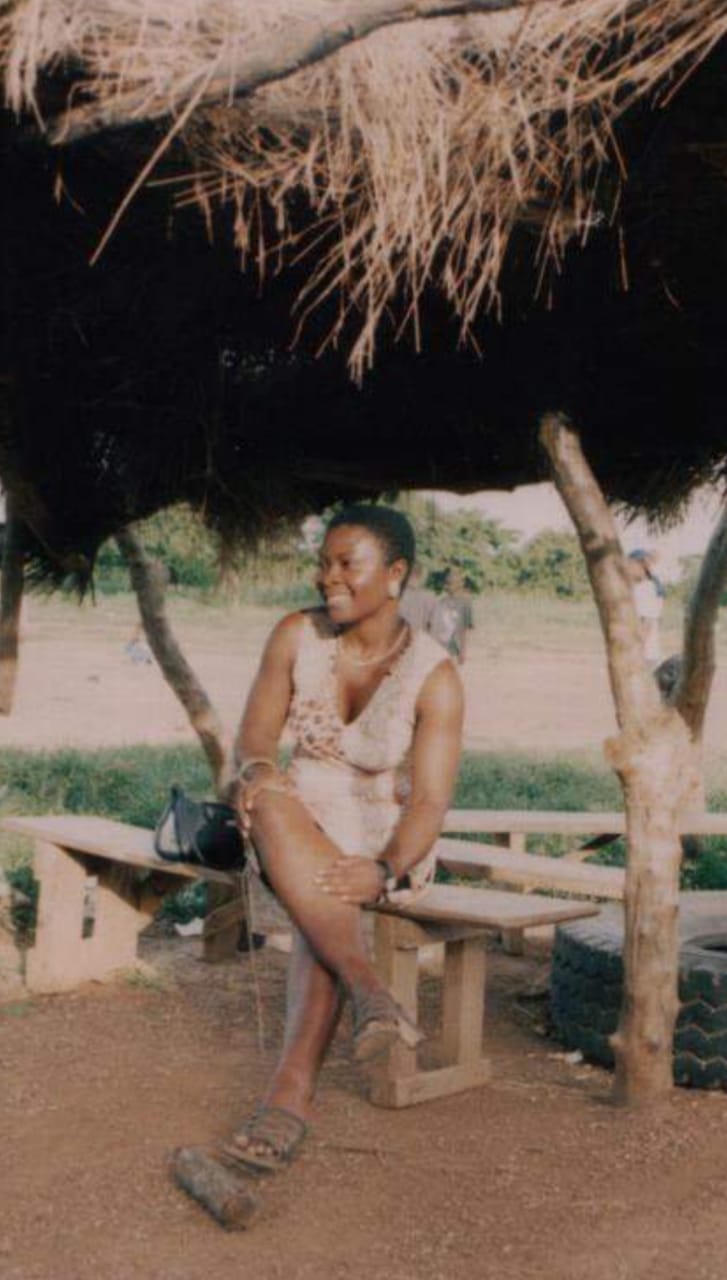Got Talent?
Esi Arhin • October 27, 2020

We define our talent and our talent defines who we are.
Watching all the talent shows on TV got me contemplating on talent and how we define it or it let it define us.
I find myself pondering on how we can uncover our talent and put it to effective and beneficial uses towards personal and national development.
One dictionary defines talent as the possession of natural aptitude or skill.
I came across another definition by Angela Duckworth. She defines talent as " the rate at which you get better with effort. The rate at which you get better at soccer is your soccer talent. The rate at which you get better at math is your math talent. You know, given that you are putting forth a certain amount of effort. And I absolutely believeand not everyone does, but I think most people dothat there are differences in talent among us: that we are not all equally talented."
I love her definition, my understanding of it is that it enables us to think about improvement as a product of both innateness and effort. We can improve with effort even when the rate at which we do is slower. Just because a person is talented does not mean he or she should remain as he or she first discovered their special ability and stay stagnate or stale.
A talented person must progressively continue to improve upon the talent he or she possesses. Talent can disipate and or expire without practice.
Duckworth's definition of talent encourages us to press on.
In trying to improve at something, one may set a higher aspiration. Enthusiastically talented people are constantly pushing the envelope to the ultimate level of their current skills and ability.
Whenever one comes to the realisation that he or she is at this height and his or her performance is evaluated in comparison to other people's , it can be interpreted as the comparative outcome that serves as evidence for a lack of talent or as talent being an individual's rate of improvement.
The second interpretation helps to continuously seek improvement, at the same time it gives the opportunity for differences in talent.
I'm reminded of the classic tortoise and hare storyalthough others may be speeding rabbits amongst your circle, there's room for each and everyone of us to aspire to excellence at what we do. We may toddle along like the tortoise but with time a person will achieve their set goals with deliberate and consistent effort.
How do we know what our talents are? Well, I've learnt, that the kind of media we consume speaks a lot about what we value. What we own speaks even louder. This is a true identity marker.
I'd like to pose a few questions to ponder in search of what we are talented at, First, we may ask ourselves, for example, I'm I highly aware of what I spend my time and resources on?
What is the one resonating idea?
What do best and love doing most?
What gives me inexpicable joy?
I believe the world is brimming with talented people, in some cases, multi- talented people. However, for whatever reason, the majority are yet to unearth and fully realise what talent they possess, let alone to put it into expression of any kind. This is sad.
How many times have we not heard that everyone has a talent? I certainly have heard it as many times that each and everyone of us is talented at one thing or other and more. Sadly, most of us don’t know what it is we are talented at, or for some when they do, keep their talent secret and close to their chest, often afraid to explore and express it. Perhaps for fear of criticism or unacceptance by others?
This parable of seven talents, has been interpreted in several ways as a teaching for Christians and for personal abilities.
According to one school of thought, traditionally, the parable of the talents has been seen as an exhortation to Jesus' disciples to use their God-given gifts in the service of God, and to take risks for the sake of the Kingdom of God. These gifts have been seen to include personal abilities, "talents" in the everyday sense, as well as personal wealth. Failure to use one's gifts, the parable suggests, will result in negative judgement.
I dare say that many of us misunderstand or dont fully realise the real essence of talent. For example, an actor's talent is fully expressed when contributed as in a role, in a play or film in a team effort. If an actor uses his or her talent only to define himself or herself to be better than the other actors in a production where all actors are to collaborate to reach the climax of the show, their talent won't take them as far as they would hope. The successful expression of the creative arts is a collaborative team effort.
Think about it, typically in a football game, what happens when a player won't pass the ball because he or she believes can dribble the ball all by themselves to the goal post and score? A football players, or any other person's talent becomes fully realised when they serve others, work with others, in a team, and not just by themselves. Talent is co-operative, it is not selfish.
I think talent is not only selfish but seeks to do , talent lends itself to be valuable, to be useful. Real talent in fact is solution seeking and problem solving. Talent has a role to play in the life of not just the person who possesses it, but also in society at large.
Talented people dont fall on others to define their talent. Their talent is not about them. they dont use their talent to create a superiority complex to make them anymore special than the next person.
Talented people are usually humble. They see their talent as something given to them to be used as a service for others. They know that their talents are to be shared and not kept to protectively to their chest.
Talented people don't feel exceptional, they think the next person can do what they do, if we tried. Talent can be horned.
So, how does a person truly know if he or she is talented at something and what?
True talent is expressed through the sheer joy of doing , not praise, recognition, or validation.
I love what I do. I always have.
When we express our talent we create joy and fulfillment in yourself and for others. You see, happiness comes through you, not only to you.
What are you doing with your talent today ? How are you impacting the people around you, your community?
How are we the citizenry consciously discovering, improving and using our talents to impact our beloved Ghana?
How are we in the creative industry, the media, using our talent in a manner that edifies society?
How are we using the creative arts to socially re- engineer how we do things so we can improve upon ourselves, our communities , our environment and our country largely?
It is heartbreaking, looking around, it appears most people dont take the opportunity to express their talent by living who they are, whatever that may be or take the time, make the effort to put their talent to fruitful uses.
The thing about talent is that when put to fruitfulness it holds the potential to feed you. Talent offers itself to industry.
It is said the world is a stage, each of us have a specific role to play. Let's all search for our particular role and endeavour to play it effectively and none of us will be disappointed.
All fingers are not equal, yet each finger is important. Don't be discouraged or put yoursellf down even if you think other people are more talented at what you do. You have a specific place in this world and no one else is you. No one can give or serve in the unique way that only you can.
So find your role and play it up wherever you may be. Talent is beautiful. Talent is gracious, in that, as we fill the needs of others we simultaneously fulfill our own needs.
I quote Johann Wolfgang von Goethe, "The person born with a talent they are meant to use, will find their greatest happiness in using it."
Goethe also said, "He who is and remains true to himself and to others has the most attractive quality of the greatest talent."
How perceive talent?
Discover yours and use it. The world would be a better place for it.
Esi's Blog

Ama Ata Aidoo's The Days , a picture book for children is a delight to read. Illustrated by Albert Buete Puplumpu, the book offers relatable descriptions of days of the week and their unique characters in a fun way. The theme of differences and similarities resonates clearly. The author employs the use of rhythm, rhyme, repetition and imagery to deploy the story. In comparison to how days behave, it plays on the characteristics of animals and things to enforce its message while encouraging children in an unsuspecting way to apply their mathematical skills. The simplicity of style and subject makes it an easy read for young children. At the same time, it holds a certain appeal for adults because of the subliminal meaning portrayed for those who understand the battles fought in daily existence. This book explores the possibilities in each day, painting a picture of life and its unpredictability in general. It assures the young that differences are normal and in fact to be expected. For adult readers it reinforces our knowledge and understanding of daily life challenges, leaving a sense of balance. The performance potential it holds is most exciting. Each day's character stares the imagination and evokes an actor in the reader. The colourful illustrations depict familiar images in ethereal bliss, typically that of the old village wall. The front cover captures the theme beautifully. It shows the different characters of days by seamlessly fusing together colours symbolizing the differences in days. The illustrations are very effective in enhancing the story. Although "Each day has hours of ten, ten and four..." "All the days are not equal" indeed. Children are sure to be entertained and learn about diversity. I'm enamored! The Days is far more than a good read. Children, gather round!

Navrongo, the capital town of the Kassena-Nankani district lies south of Paga, the main border crossing between Ghana and Burkina Faso. It sits at the tropical Savannah belt, Upper East of Ghana. I first made my way there sometime in September 2002 through a friend who couldn’t believe I had lived all 27 years of my life in southern Ghana, never having traveled up north. He insisted I needed the exposure and so he dragged me with him. He said I had not lived If I had not seen the sun rise on the Tono dam. So, one fine morning at 5:00 am, I jumped into his pick-up truck, and we headed up north where he had made a home away from fanteland. It was the longest road trip I had ever embarked on at the time, 15 hours on the road to be precise. Takeaway the breaks we took at Kumasi, Kintapo and Tamale. I barely noticed the hours pass as we chatted all the way with the company of Fela Kuti and Bob Marley playing in the background on repeat. To this day, the ride to Navrongo remains one of the fondest memories I have of traveling Ghana for work or leisure. This part of the country is home to two ethnic groups, the Kassims and the Nakanas. Historically, it is said that these two ethnic groups have had relative independence because the Ashantis didn't invade them. However certain treaties established by the British in 1898 an Anglo-French convention came up with an agreement to divide the lands. The Kassims and Nankanas were subsequently separated from their relatives who today live across the border, Burkina Faso. Older indigens of Navrongo know it as Navoro, which means (to put your foot down on soft ground). Today, the town is indeed soft ground to live and explore what new opportunities it has to offer, including access to tertiary education locally. The siting of Tedam University of Technology and Applied Sciences campus to the township has brought much warmth to the once laid back and very quiet town. Yet, it still remains relatively calm in comparison to Bolgatanga which is 30 kilometers away by road, about 40 minutes’ drive. It is an important market town in the area. The people are mainly subsistence farmers and rearers of cattle and goat. Navrongo is known for its famous mud-built cathedral and grotto, Our Lady of Seven Sorrows. Although it doesn't haven many formally designated places of tourist attraction, it is by its character a great attraction. The warmth of the people, the native architecture, fabrics, the market, the guinea fowl joints, the easy connection between humans and cattle in full glare, make up a total unique culture for experiencing. Marked places of interests in addition to the mud-built cathedral are the Tono dam, which is one of the largest agricultural dams in West Africa, also the first ever solar plantation and the health research centre. It is awesome to watch the sun rise ever so gracefully on the Tono dam.The rising of the sun is said to symbolise the journey of the sun in the sky. At about 5:00 am one morning my host and I set off on a drive to see the famous sunrise on Tono dam. The joy of watching the sunrise on the dam is next to none, with nature at its best early morning. The sun’s golden rays added a burnt orange colour to the smoky clouds. A small ball of light emerged from the sky at first. It then slowly starts to get bigger and illuminate. As if on cue birds began to chirp in glorification of the glow of the orange goddess. Its beauty is beyond description, I cannot do it justice. Suddenly, out of the blue it bursts out into a gleaming ball expanding at a moment's look. The first rays are gentle and soft on the eyes. It is a rare joy, eternally etched in memory. I have seen many a sunrise over the years but this one was magnificent, just as my host promised. It was worth every bit of the journey. One thing I found most fascinating is the hand production of ethnic fabrics by the women of Navorongo. They grow and eat their own food. They make their own beer(pito), their own beauty products from largely local materials. They build their homes with their bare hands also with local materials. They made ordinary what appeared phenomenal to me. There are some fairly decent guest houses and lodges to stay in, especially for low budget travelers. Moving around is not difficult, there are taxies and motor cars available for hire as well as collective rides. For a fun night, there are lots of drinking spots and bars to hang out and dig into some well spiced charcoal grilled guinea fowl or beef kebabs. You may sample grilled guinea fowl in as many grilling spots as you like. That is a sport in itself. I've had several opportunities to return to Navrongo after my first visit. With each visit the land and it’s people grow on me. Memories of Navrongo call. Nearly two decades after my first trip there, my heart still misses a beat at the mention of her name. Could it also be that the face of that handsome Kassim man still smiles on me?
